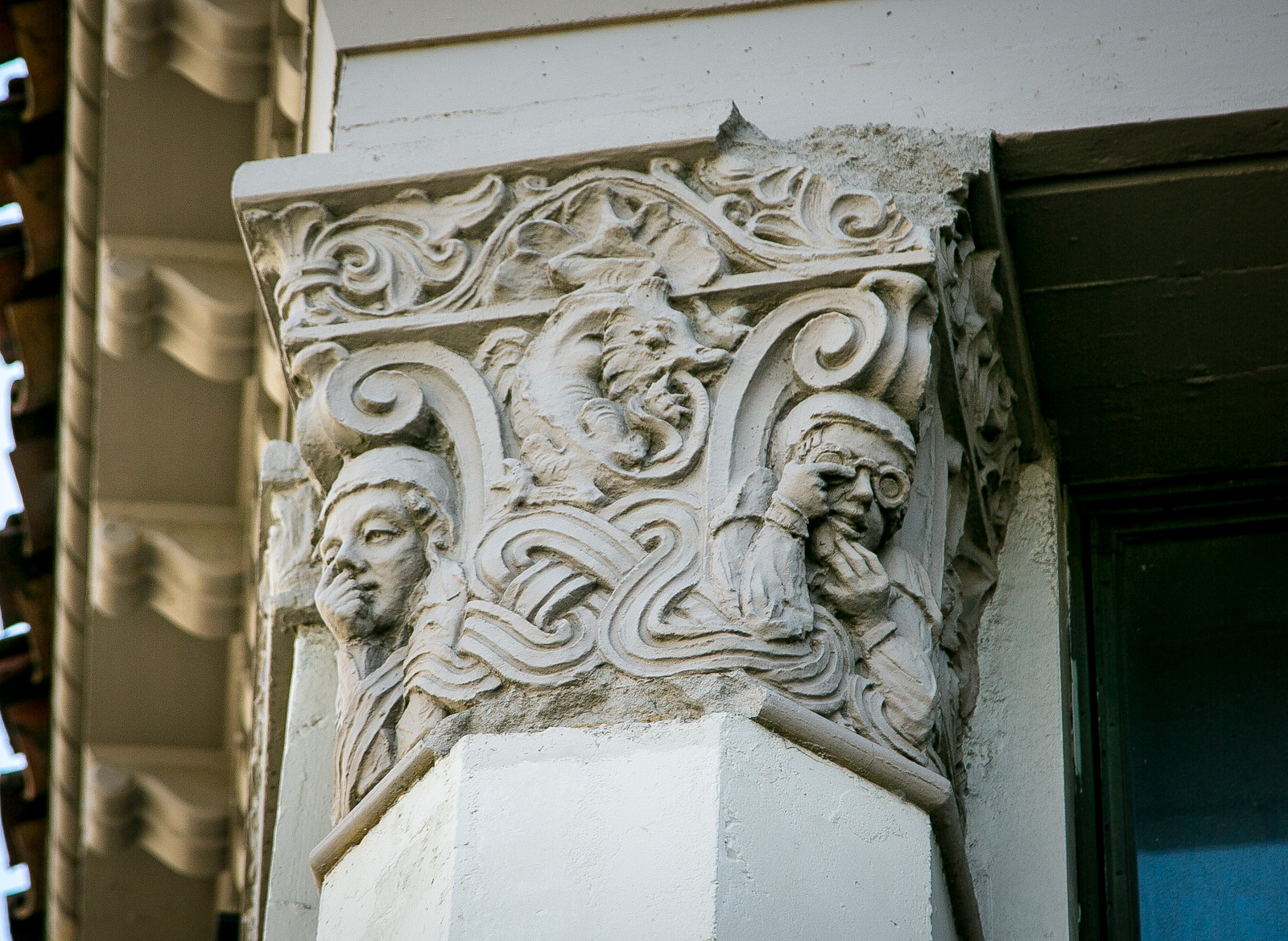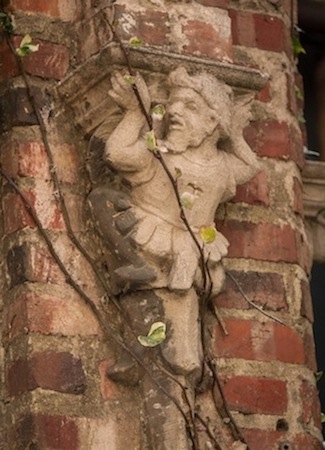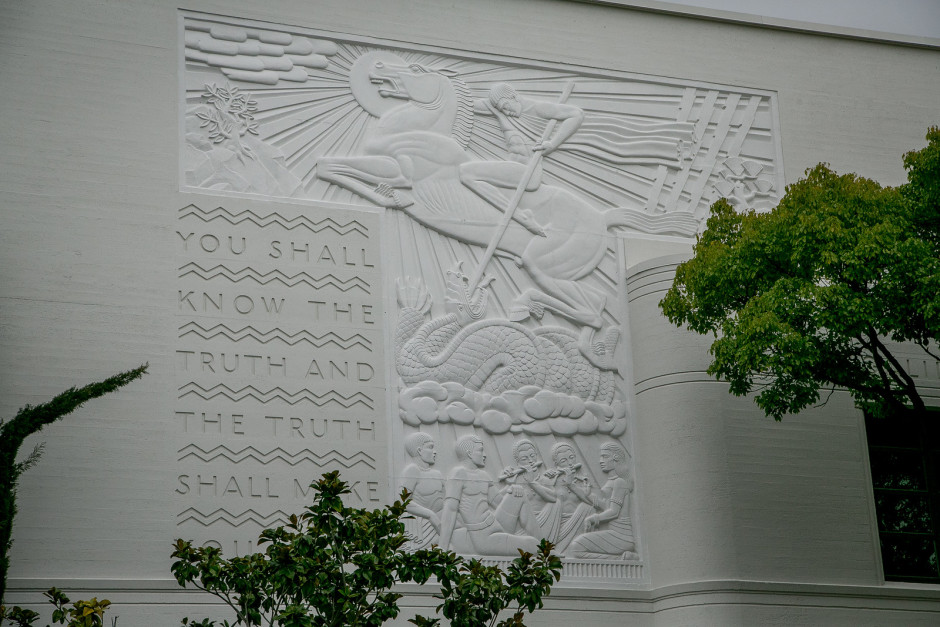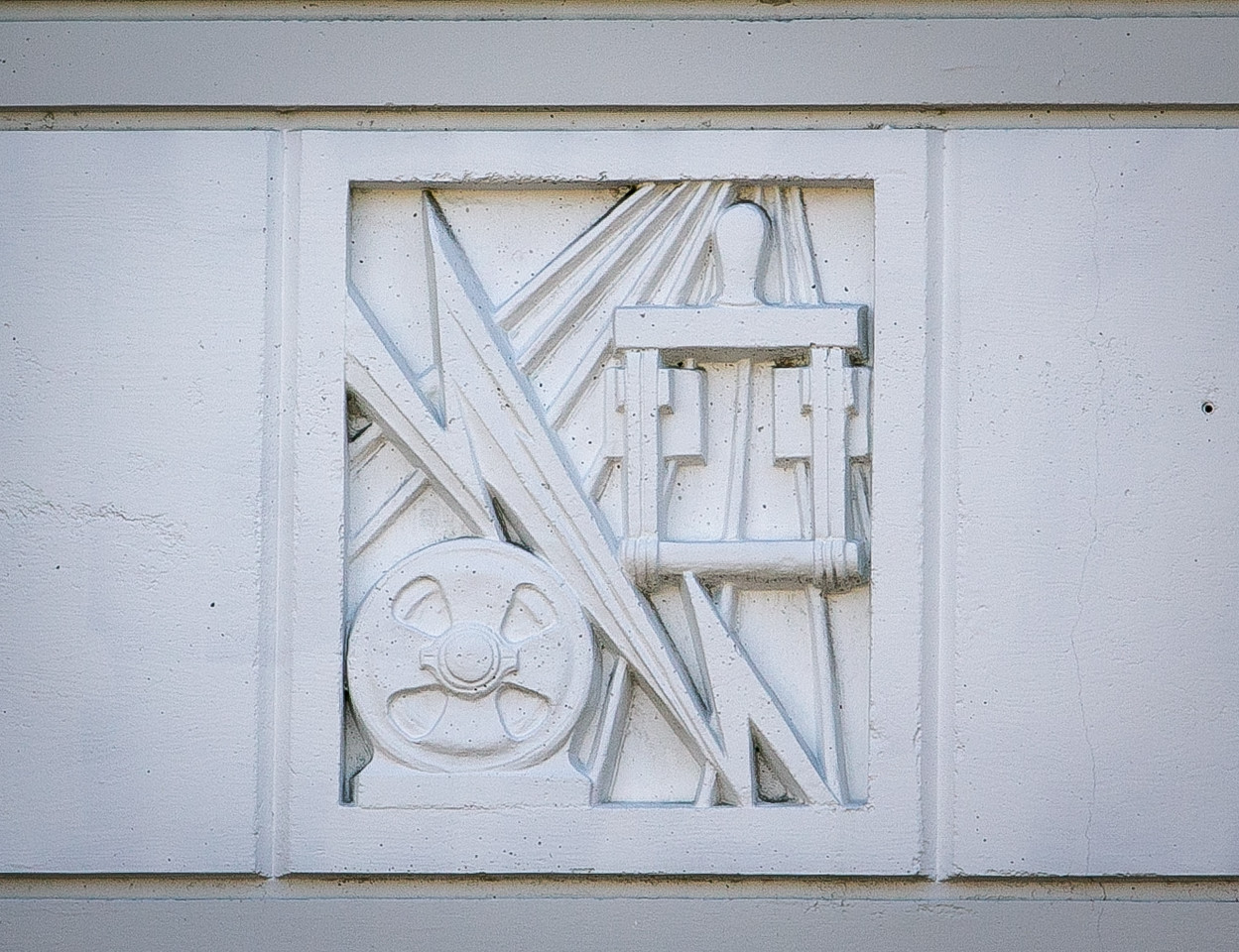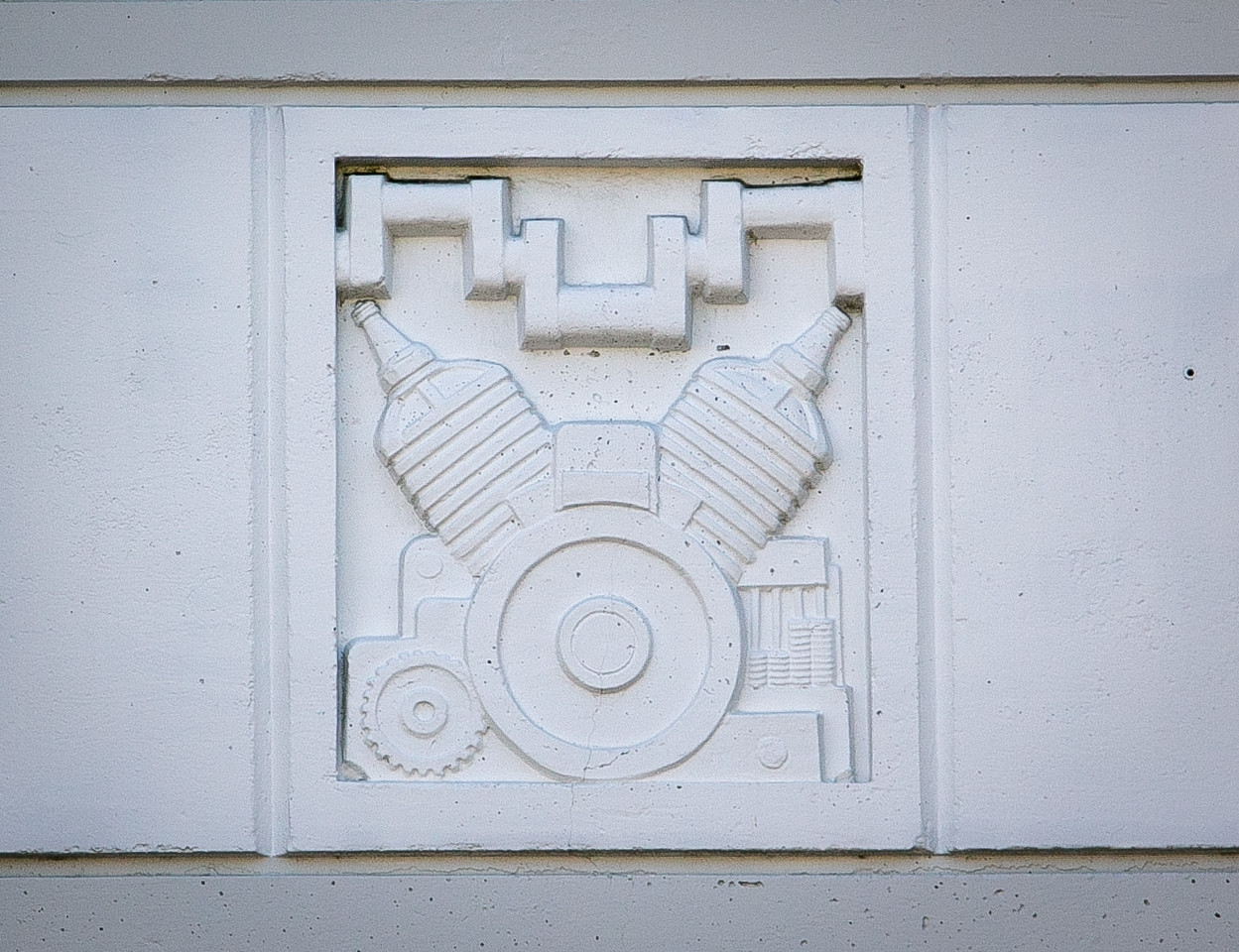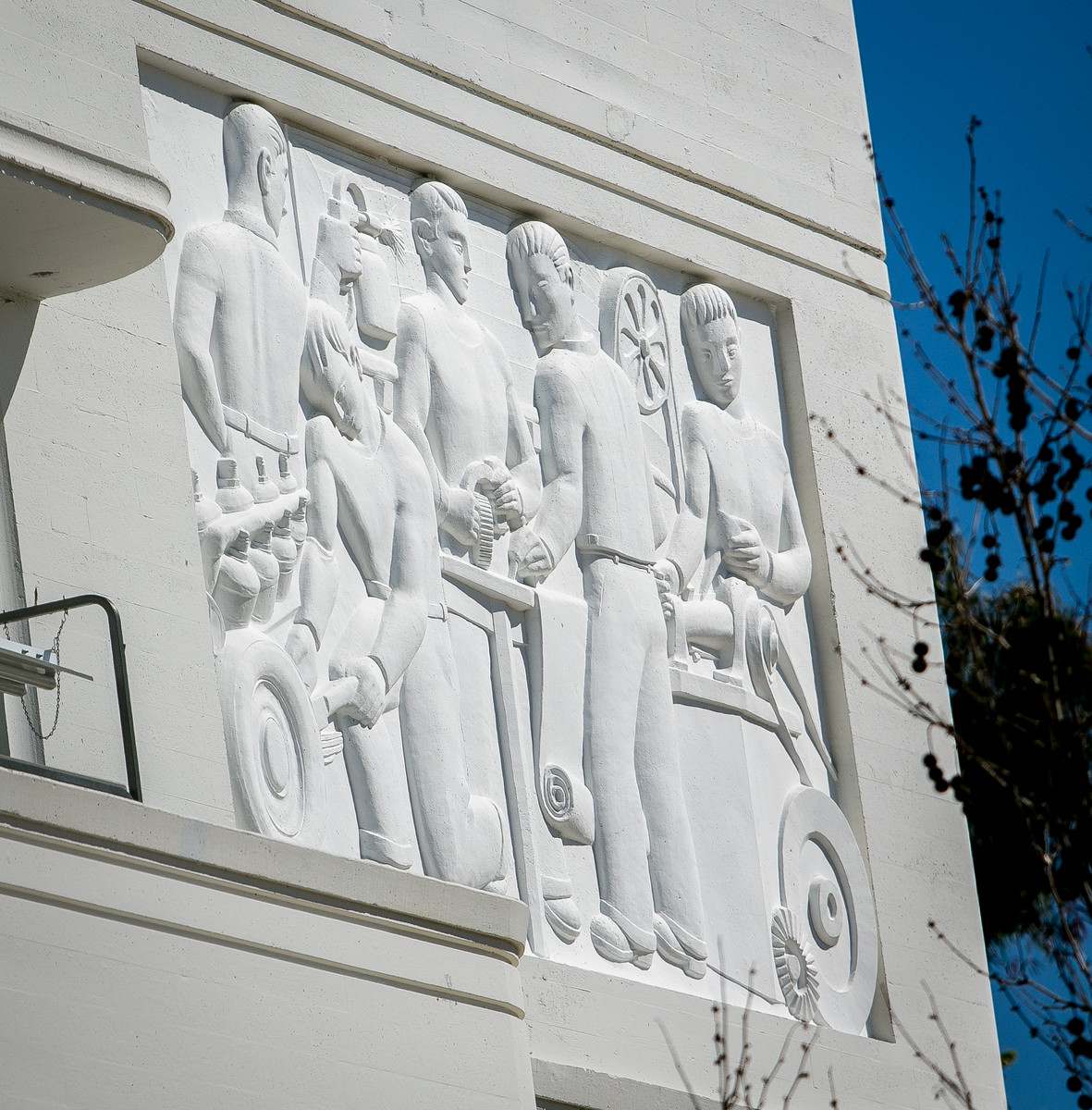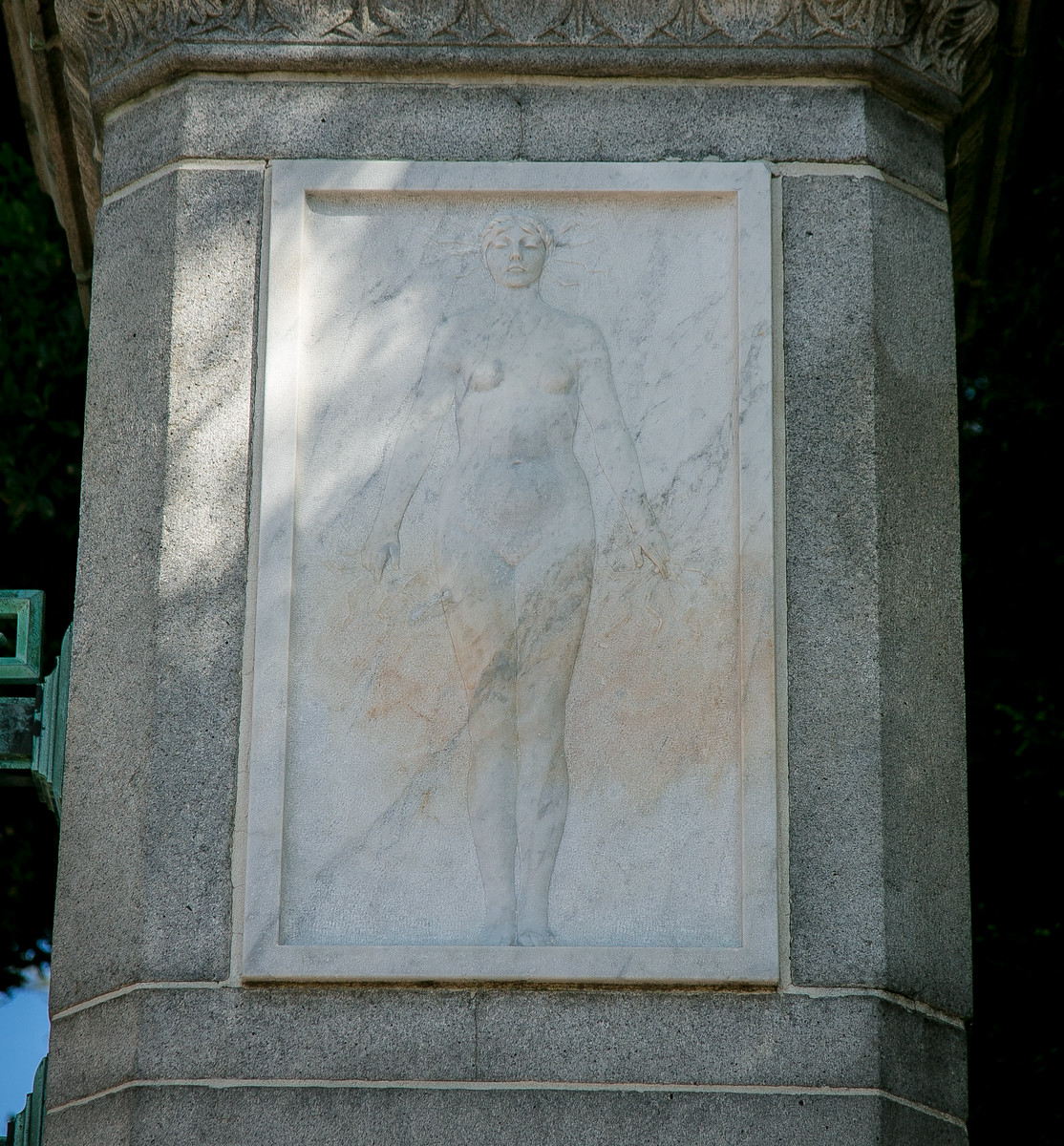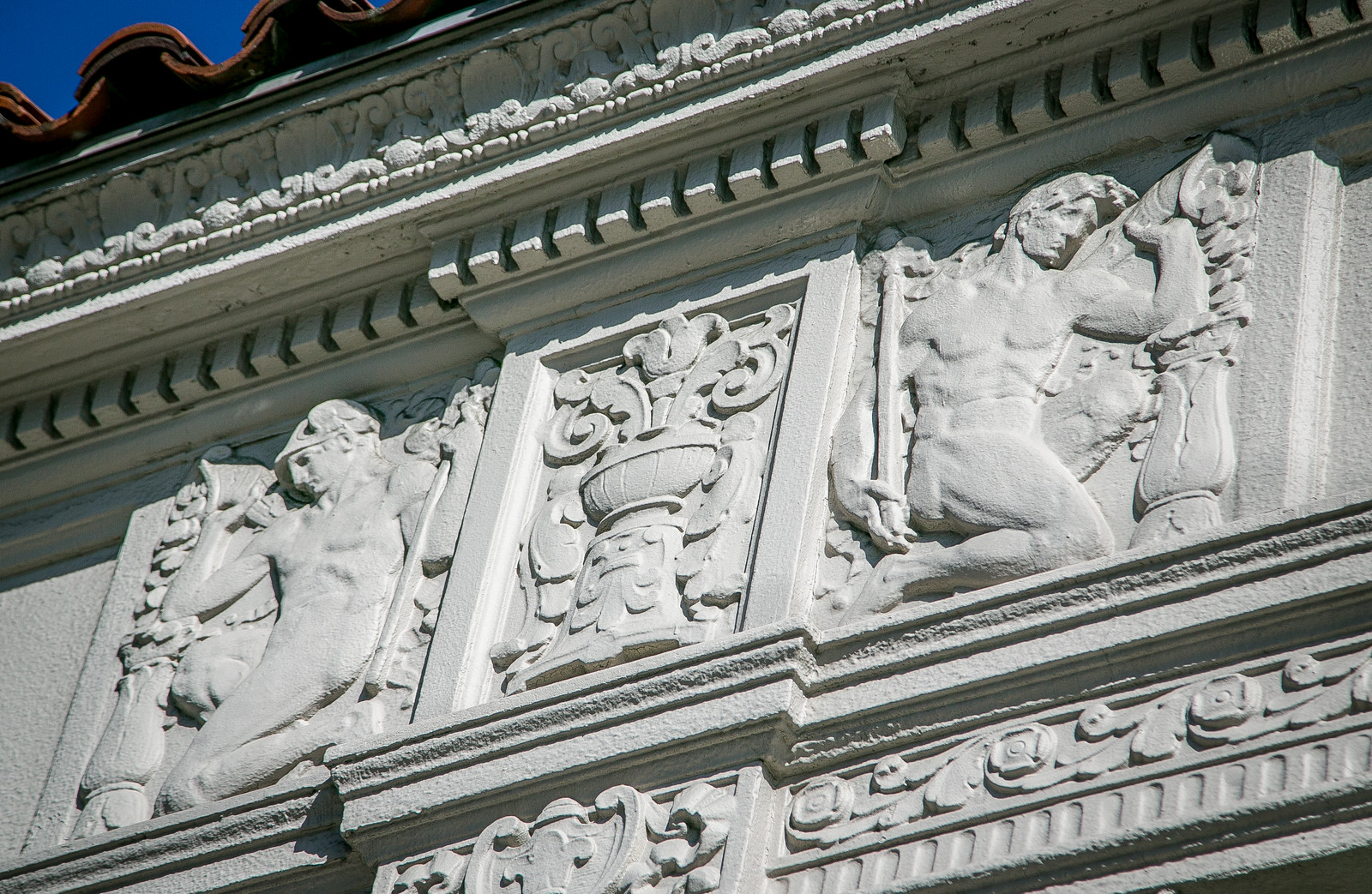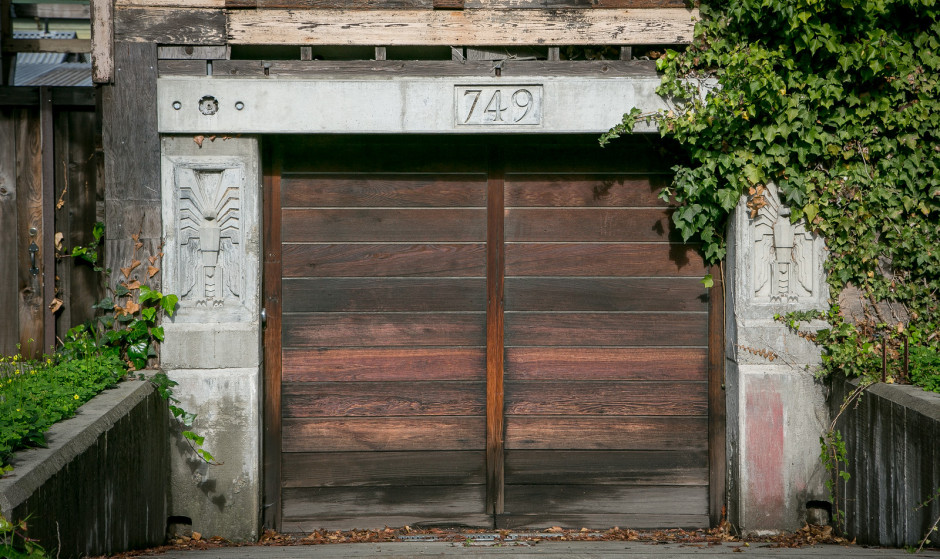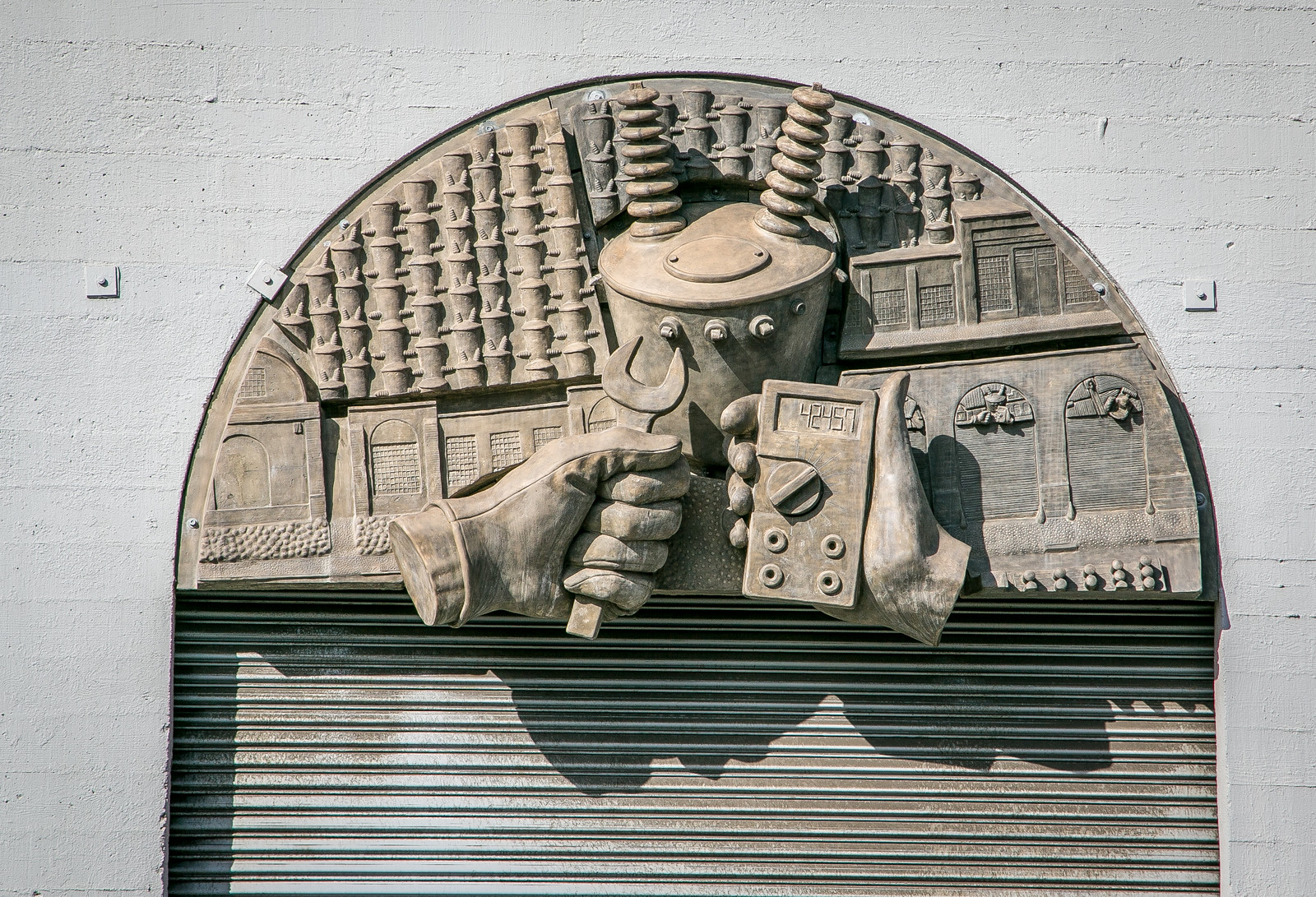I started this post with a digression that had nothing to do with Berkeley, a digression about bas relief in my Philadelphia childhood. The digression got too long so I moved it elsewhere and will just jump in with Berkeley.
But another problem arose. I have used the term “bas relief” casually, unaware that there is a range of relief, depending on the degree of projection of the sculpted form – high relief, mid-relief, low relief (bas relief) and sunk relief. That is why a post that was in draft form called “Berkeley Bas” has become “Berkeley Relief.” I don’t want to quibble about high low or mid. Plus – “Relief” gives a chance for double meanings.
Relief panels may not be intrinsically quirky, but – they may be quirky. These panels are most def quirky:
The panels are at what is now DaVita Berkeley Dialysis.
It was formerly Reel Video. Very likely the best video store ever! And before that? I didn’t know.
And so I looked up from the toddlers’ section of the playground where I play and asked the big kids about it. Within a few hours, Anthony Bruce and Daniella Thompson of BAHA found out many things about the building.
The building was designed by Walter Ratcliff, a superhero of Berkeley architecture. It was built as a public garage with a showroom in 1923 for Cochran McCarron, born in Tenaugh, County Derry, Ireland, of Scottish descent. By 1930, McCarron had moved his showroom to 2000 University Avenue, the southeast corner of University and Milvia. A branch dealership of the H.O. Harrison Company occupied the Shattuck Avenue space.
Harrison sold Hudson and Essex cars. Essex was, at the time, the third largest car manufacturer in the United States. Who knew?
By the 1960s, perhaps as early as 1954, the building was occupied by British Motor Distributors, run by Kjell Qvale. Qvale was born in Trondhjem, Norway. He was the first distributor of the Jaguar on the west coast. Plus Austin, Morris, and Rolls Royce. And later he became the first and exclusive distributor of Volkswagens on the west coast.
Great knowledge!
Now I just need to find out about the maker of the relief panels. If only those imps could talk….
Liz O’Hara of Ratcliff Architects didn’t turn up much. She told me that Carlos and Enrico Maschio were the only stone masons that Ratcliff used. This is probably not the work of a stone mason, but, information noted.
She did direct me to the Mason McDuffie building (2101 Shattuck), now home to Scandinavian Design (a lovely coincidence as Ratcliff used Scandinavian laborers, many of whom spoke no English).
Along Addison,the pilaster capitals show crows/ravens and bears.
Along Shattuck, four columns, and four pay-dirt capitals with relief humans!
Of this panel, O’Hara wrote: “One of the panels we are pretty sure depicts Ratcliff with his hands to his head as if he’s had it up to there.”
These are great! Really great.
Straying even farther from the rules, here is a photo that Daniella Thompson took:
It is A fireplace designed by Walter Ratcliff, with a bas-relief panel by Domingo and Joseph Jacinto “Jo” Mora in the Cairns House, 2729 Elmwood. I know the house. Felix Polk lived here in the 1980s. In 2002 his wife Susan murdered him in their Orinda home. You perhaps remember the murder and the trial. A tragedy in every possible way.
Under the auspices of the WPA, Mora made this relief at the King City High School. A fair piece off the mark, but Mora was an extraordinary figure, worthy of attention.
Continuing our tour of Berkeley relief – a tad south on Shattuck is the Tupper-Reed Building, constructed in 1925 for John Tupper and Lawrence Reed for the music store, that they had opened in Berkeley in 1906.
The architect was William Raymond Yelland, a UC graduate whose signature style was “storybook” or, evident here – Medieval Revival. The building features clinker bricks, wood beam ceilings, slate roofs, balconies, fanciful decorations, a monumental fireplace, and – relevant here – relief.
The main Post Office gives us a classic relief:
It was created by David Slivka under the auspices of the Treasury Relief Art Project.
The man at center of the panel is holding a package addressed: “From: D.S. To: All Mankind, Truth Abode on Freedom Road”
Another classical relief:
It is “Youth” by Clara Huntington, found in the west court at the Berkeley City Club.
This photo of Ken Stein with the City Club relief was taken in 1983. Cool!
There is great relief both at the central branch of the Public Library and Berkeley High.
The library was designed by James Plachek. The relief is, I am told, Moderne.
Susan Cerny wrote: “Toward the end of the 1930s, Berkeley High School undertook an extensive building program to replace older buildings and build new ones. The shop and science buildings, the Florence Schwimley Little Theater, and Berkeley High School Community Theater were designed in 1938 by architects Henry H. Gutterson and William Corlett, Sr. They are the only planned ensemble of Art Deco–style buildings in the city and are significant examples of the style in the Bay Area.” This BAHA post informs on the relief at Berkeley High.
The relief at Berkeley High are by Jacques Schnier and Robert Boardman Howard,
Schnier was a Romanian-born city planner, architect, and sculptor who taught at Cal for 30 years.
Howard, the son of architect John Galen Howard, was an accomplished sculptor.
More relief at Berkeley High.
Pivot: I have not decided exactly how Quirky Berkeley will treat the campus, but howeverI decide to treat it, attention must be paid to Sather Gate, donated to the university by Jane K. Sather in memory of her husband Peder Sather. It was completed in 1910.
Mounted on the gate’s columns were eight marble bas relief panels sculpted by Melvin Earl Cumming, an Instructor in Modeling in the University’s School of Architecture. The panels depict male and female nudes representing the eight fields of learning: letters, mining, medicine, law, electricity, agriculture, architecture and art. (Cumming also made a bas relief bust of George Hearst at the Mining School building. Mental note: must get there).
Nudes in 1910! Not long though. After originally supporting the panels and bridling at talk of removing them, Mrs. Sather saw embarrassed students and reacted – the panels were “extremely indecent” and “disgusting.” The relief panels were removed. They were stored under the bleachers at Edwards Stadium and at the Amador Marble Company in Oakland.
That is why there is no relief in sight (GREAT PUN!) in the iconic Sather Gate FSM photos. They were found in storage in 1977 reattached to the columns in 1979.
Here is what offended pious eyes:
The women (facing south):
The men:
In a 2008 article in SFGATE that Daniella Thompson forwarded me, Ken Stein states that the men were originally facing south, but that juxtaposition of the plaque reading “Erected By Jane K Sather 1909” with nude males was deemed to-be-avoided. It is a lovely story if true. I am trying to track down the sources for this claim.
The next two photos – which are not mine – suggest further classical relief to be found on campus:
While at Sather Gate, I picked up a few more on Telegraph or just off Telegraph. This is not an exhaustive survey of Berkeley relief. It has been suggested that I do so.
Moving to homes – we have a few lovely examples of residential relief. I have posted before about Jos Sances’ baseball bas relief at 2310 9th Street:
Traditional, elegant relief at homes:
P.S. There is another relief – carved relief. I have seen one wonderful example in my walks.
Above a door in which each panel contains a painting depicting one of the crafts involved in the making of the house is this carved relief of a baker.
P.P.S. There is a rogue relief on Arch Street – in the devil’s strip between sidewalk and curb, a hefty piece of high relief:
I suggest that we leave Berkeley for just a moment, wandering a few blocks south to Emeryville, to the PG&E building at 45th and Hollis. In the 1980s I represented a worker who had been fired at this warehouse in an arbitration against PG&E. I used Michael Lerner who was then part of the Institute for Labor and Mental Health as an expert witness. We won!
The Smithsonian Inventory of Art tells us that the relief sculpture on the PG&E warehouse is the 1992 work of Scott Donahue and Mark Rogero, and that “This sculpture collection consists of two groups of three arched panels. Each panel is a semi-circle about 10 feet wide and 5 feet high. Each of the six panel depicts something from the history of the Pacific Gas and Electric Company.”
The north end:
The south end:
PG&E has a lovel high relief made by Edgar Walter at its headquarters at 245 Market Street, San Francisco. You can see it here.
Back to Berkeley for a finish in the future tense.
Muralist Juana Alicia is using Kickstarter to support the installation of a new, bas-relief ceramic mural for Satellite Senior Housing.
Just as the Berkeley reliefs get me thinking about Philadelphia, so they get my friend thinking about Detroit. “The Rackham Building – outrageous relief facade. I wonder how it’s doing.”
What about the Berkeley relief?












